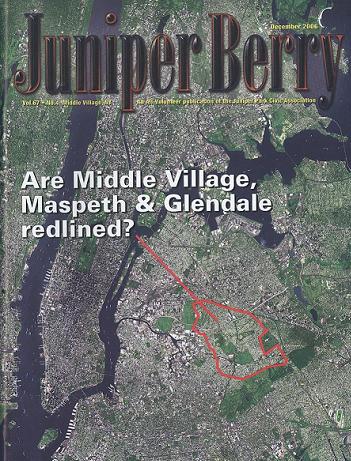A lot of people are surprised when they hear that there are wild parrots living in New York City, but several hundred of them have been living here for many years in Brooklyn, the Bronx, and in Queens. There are many myths and legends surrounding their first appearance here in the early 1970's, but the most credible explanation is that the parrots we find here now are all related to a flock that was inadvertently released at Kennedy Airport in 1967.
How do these parrots survive New York's cold winters? Well, it turns out that they're well-suited for survival in our city, because their native land of Argentina also has a varying, temperate climate. In fact the kind of parrot living in New York, known as the Quaker Parrot or Monk Parakeet, has been able to survive in places with tougher winters than New York City, notably Chicago and Montreal.
The key to their survival lies in several strategies that the parrots have worked out: first of all, they are the only type of the roughly 350 types of parrots which builds elaborate stick nests providing warmth and protection against the cold. Throughout the year, these parrots are continuously renovating these impressive aerial structures, which are often found on stadium light poles and other man-made platforms. They are also what bird scientists call “plant generalists,” meaning that they like to eat many different kinds of food available in urban areas, including grass, leaf buds, acorns and chestnuts, and bird seed from bird feeders. These parrots are also highly sociable, which helps them evade the many hawks, falcons, kestrels, and other avian predators patrolling New York's skies. Watch them for awhile and you'll notice that there is always at least one parrot scanning the sky for danger: if a threat appears, this “lookout” parrot will issue a special call warning other members of the flock to take immediate evasive action.
When the parrots first appeared in the 1970's some conservationists feared that they would behave aggressively toward other native birds, but no evidence exists to suggest such fears were ever warranted. Today, the parrots get along very well with the other urban birds which we find in New York City, including pigeons, sparrows, starlings, and mourning doves, and you'll often find them foraging for food together. The parrots do not, however, get along well with crows, which prey on their eggs, and of course, New York's birds of prey, which occasionally try to attack them. The parrots also seem to get along quite well with squirrels.
Quaker Parrots are highly intelligent and scientists have identified at least 11 distinct calls which they use to communicate with each about different situations they face each day. There are alarm calls, “all clear” calls, calls they make to each other to coordinate their flight patterns, calls to announce the location of food, and other special calls that scientists haven't yet decoded. In captivity, the Quaker Parrot is a very talkative parrot whose speech abilities are second only to the African Grey.
Sociable, intelligent, hard-working, fast-talking and ever-watchful, these resourceful Quaker Parrots have all the qualities required to “make it” in The Big Apple!
Read more about the wild parrots of New York City on Steve Baldwin's website, www.brooklynparrots.com and sign up for his free “Wild Brooklyn Parrot Safari” that takes place every month in Brooklyn. It's a great learning experience for people of all ages.




